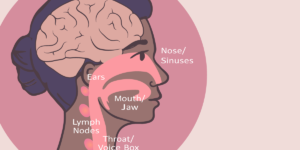
breast cancer
Did you know why detection in women is high? It’s a scary number, but as they say, awareness is power. In this article, we will explore in depth what breast cancer is and what to do if it becomes a condition to live with in millions of lives. Whether it is your concern for personal health or your wish to help someone else, this guide will provide you with the necessary information.
0Breast cancer is SDQU :00
Breast cancer is, in fact, a disease in which the breast tissue cells uncontrollably grow. It’s like mixing up the instructions on how to make your body, which then leads to errors in cellular division, that ends up with multiple cells being formed instead. These rebel cells can form into lumps, which you may feel when you touch the area and which can be seen on x-rays as well.
Types of Breast Cancer

Breast cancer isn’t a monolithic disorder but rather a range of various types, e.g.:
They are not the same in their behavior and require specific treatments based on each one of them.
Risk Factors: What Increases Your Chances?
Though any formation of cancer is the issue of cells developing and replacing the healthy ones, but some risk factors that make the risk of cancer increase are to be kept in mind.
-
- Being =it=beyondrollback{ does it only refer to female.}
-
- In case you are raised
-
- Family background with cancer (in women mostly)
-
- terrine mutations (similar to BRCA1 and BRCA2)
-
- Starting menstruation before and menopause after turn
-
- Decreased breast density
-
- Obesity as well as little exercise
-
- Alcohol is in
Signs and Symptoms: What to Watch For
Your sensitivity to the changes in your body and thus being vigilant with those changes will help you greatly. Watch out for:
-
- A lump or thickening found in the breast or underarm
-
- Changing in breast size or shape
-
- The skin looks like your skin and like skin irritation, but there are other subtle signs too. Any one of them is:
-
- Changes in your breasts (inverted nipples or discharge)
-
- Redness or flaky skin in the nipple area
Diagnosis: How Breast Cancer is Detected
The earlier it is found, the more successful the treatment can be. Some diagnostic tools are:
Treatment Options: Fighting Back
The plans to be carried out along with the person are individual hence the way the person is going to be treated will be different with each person. The options may include the following:
Living with Breast Cancer: Beyond the Diagnosis
Feeling of being identified with breast cancer can be a paradise for the individual or on the contrary, it can be a completely horrible thing to face, which is definitely a struggle. Besides, have in mind that, however, you are not alone. Support groups, counseling, and lifestyle changes can all be used as the components of your therapy. The majority of women find the hidden powers they had and establish unbreakable bonds with other survivors.
Prevention: Reducing Your Risk
The expression “there is no sure way to prevent breast cancer but” the fact remains that you may actually lower the risk that you have by taking some precautionary steps such as:
-
- Maintain a healthy weight.
-
- Exercise regularly to keep your body in a healthy state.
-
- Limited alcohol use.
-
- Furthermore, try to avoid the annoying habit of smoking.
-
- If you can, breastfeed your baby; it can be helpful for both of you.
-
- Minimize the amount of hormone therapy after menopause.
The Power of Early Detection
Just consider this incredible fact, which claims that when a very localized detect is located in the breast the 5-year relative survival rate later on is found 99%. This just goes to show the ones that are in need of regular check-ups and the way to do it themselves as well are.
Conclusion: Taking Action

Breast cancer is a difficult condition, but being aware of it is the beginning of the way to beat it. So why don’t you accomplish the following right now:
- Make your appointment to a mammogram. Wear a mask when you go there, and remember to ask all the questions you’ve got that’s bothering you. You may also report other health problems or concerns you have to the doctor.
- Every woman should know how to do this small operation, and breast self-exams are easy to do, and you do not have to be a doctor or a nurse to do them.
- Go to a healthcare provider and talk about what your chances are
- Engage in lifestyle changes as a means of lowering the risk of catching it
- Give your money to support programs of cancer research and awareness.
Thus, knowledge is power, prevention is care and through early detection, lives shall be saved. You are safeguarding your health and the health of your loved ones by getting them engaged in activities, you informed yourself and actively engaged in the process by being vigilant and asking for help when needed.






